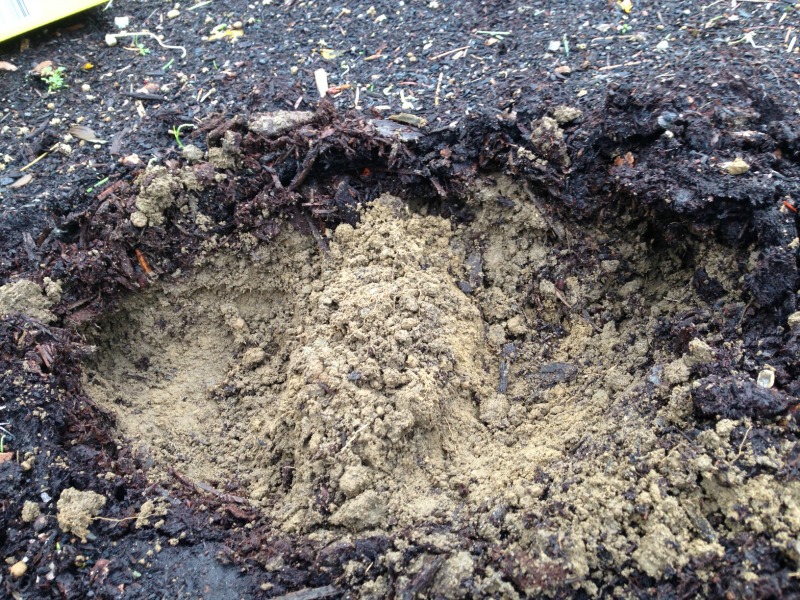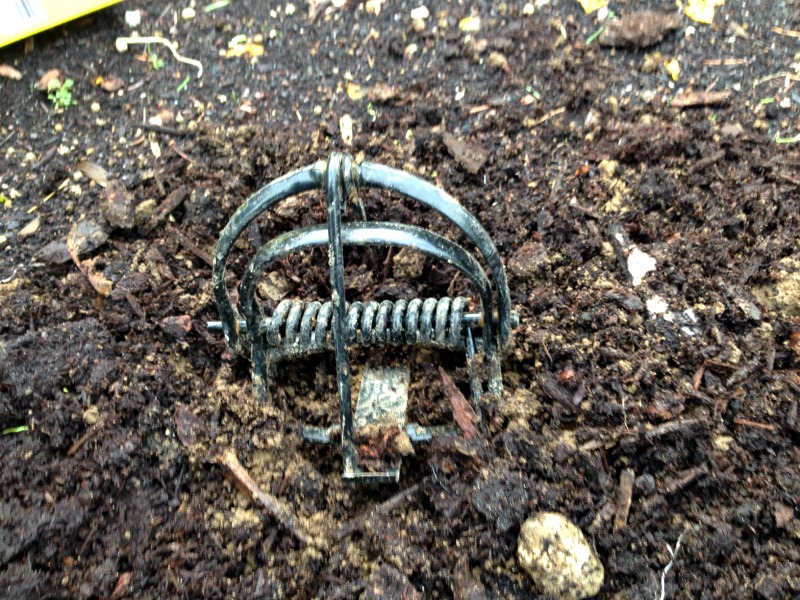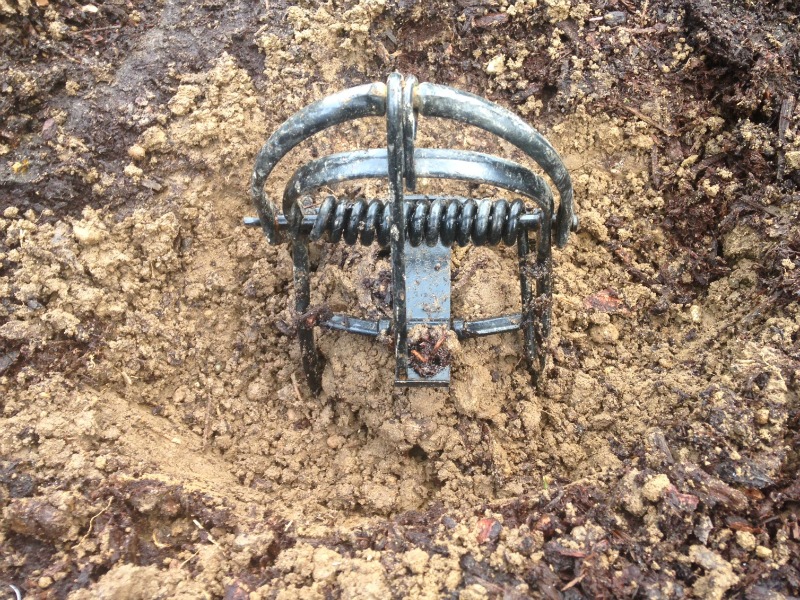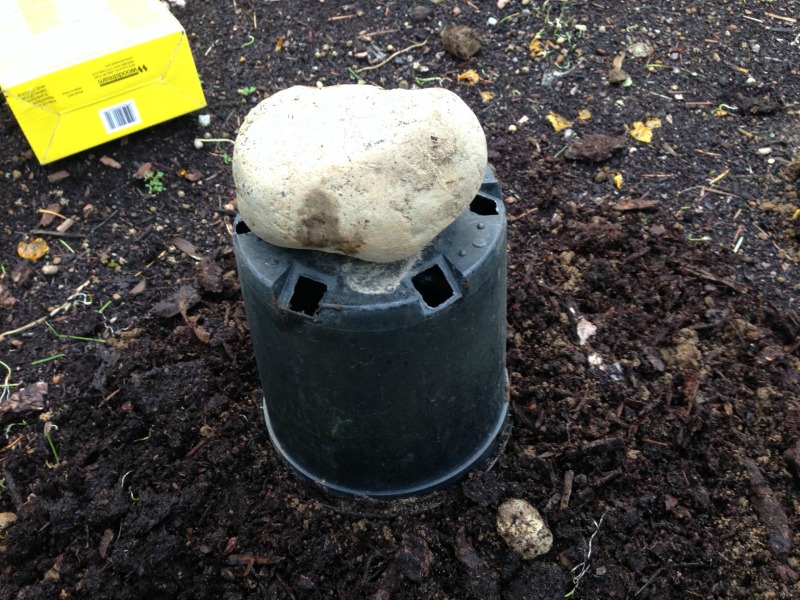How to Get Rid of Moles
The most important thing is deciding if you actually need to try to remove the moles from your landscape. Keep in mind that moles and other tunneling creatures help break up the compaction in your soil and are a great means of assisting in over all soil health.
In most cases if you only have a few moles they in reality are not causing that much damage. In certain cases if multiple moles are causing actual damage to your plants by damaging their root systems or have created enormous amounts of mole hills in the lawn you may decide you want to get rid of them.
The most effective method to getting rid of moles is trapping. The method described below is a trapping method that will kill the mole once caught.
Check with your local laws regarding trapping as moles are protected in certain areas.
Things you will need:
 Victor Out O’Sight Mole Trap (Can be purchased online or at a hardware store), shovel, small rock, size 1 or gallon sized pot.
Victor Out O’Sight Mole Trap (Can be purchased online or at a hardware store), shovel, small rock, size 1 or gallon sized pot.
Step 1: Pick an Active Mole Hill
 Find a freshly mounded mole hill or tunnel and slowly dig down until you can locate the two small tunnels that connect to either end of the hole you just dug out. You should be able to stick a finger or two around the circumference of the hole until you find them.
Find a freshly mounded mole hill or tunnel and slowly dig down until you can locate the two small tunnels that connect to either end of the hole you just dug out. You should be able to stick a finger or two around the circumference of the hole until you find them.
Then you want to take some of the loose soil without any large rocks in it and make a small mound that would block where the mole would tunnel through again. You want the mound of soil at the same level as the tunnel.
This is the portion of soil that the mole will push up when he tunnels through again setting off the trap.
Step 2: Set the Trap
 Next take the spring loaded Victor Out O’Sight Mole Trap and set the trap by taking the two lever bars and prying the jaws apart.
Next take the spring loaded Victor Out O’Sight Mole Trap and set the trap by taking the two lever bars and prying the jaws apart.
Put the safety in place at the top and then set the long metal bar against the flat rectangular trap release. Position the trap so that the trap release rests on the top of the soil mound you made in step 1.
When the mole tunnels through the mound it will push up on the soil and trigger the release and the jaws with snap together killing the mole quickly.
Step 3: Fill in the Trap
 The next step is to fill in lightly soil around the trap being careful to not block the trap release with rocks, etc. Carefully release the safety.
The next step is to fill in lightly soil around the trap being careful to not block the trap release with rocks, etc. Carefully release the safety.
Step 4: Cover the Trap
 Cover the trap with a bucket or or size one pot to help block out light and hold in place with a rock. This is also a safety measure for pets and kids.
Cover the trap with a bucket or or size one pot to help block out light and hold in place with a rock. This is also a safety measure for pets and kids.
Step 5: Watch and Wait
Every day or two check the traps and see if you have caught the mole. You may need to place multiple traps or move the traps from time to time. It helps to wear gloves so the moles do not smell human on the trap.
About the Author:
Jonathan Aflatooni is the co-owner of Blacklotus Landscaping LLC, a residential and commercial maintenance and installation company. Jon has many years of practical experience in the field, from propagating his own collection of plant life to creating and designing new landscapes. Jonathan hopes to share some more practical advice and insights with everyone in the near future.
If you are working land with machinery – moles throw stones to the surface and cause real problems.
My favourite piece on the subject:
/www.youtube.com/watch?v=fePU5CIHpas
Enjoy